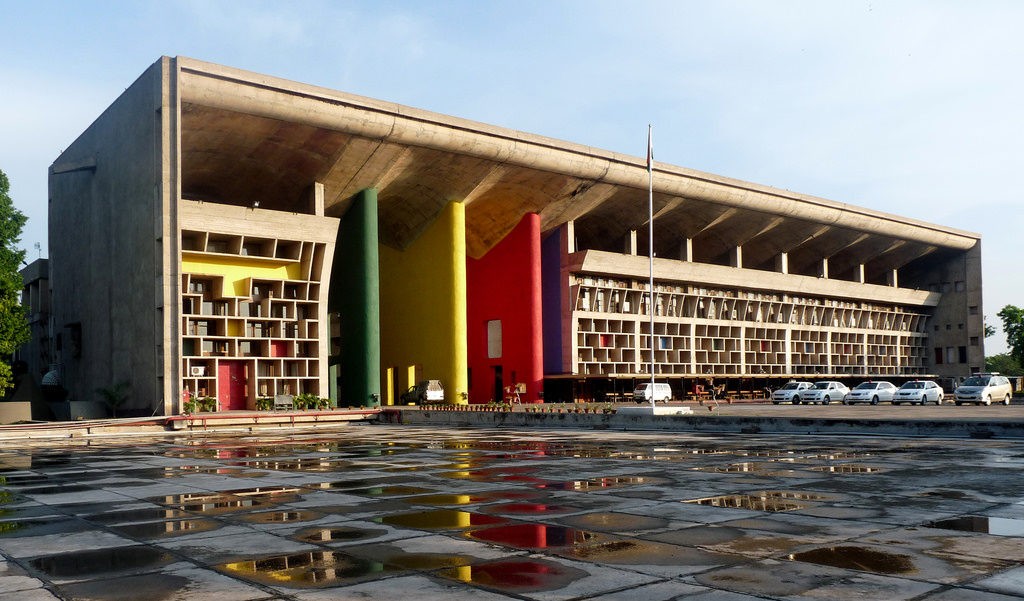
Buyer Beware
Purchaser of residential floor in Chandigarh only becomes a co-owner/co-sharer in the entire building: High Court.
THE VOICE OF CHANDIGARH NEWS:
A Division Bench consisting of Hon’ble Justice Tejinder Singh Dhindsa and Hon’ble Justice Vivek Puriof Hon’ble Punjab and Haryana High Court at Chandigarh in judgment pronounced on 23.11.2021 in CWP No. 18559-2016of 2016 titled as Residents Welfare Association and Another vs Union Territory of Chandigarh and Ors. while dismissing the CWP of the petitioners has held that the residential building constructed on a residential plot in UT Chandigarh cannot be confined for single family use. The said petition had been filed in public interest seeking issuance of directions to restrain the official respondents/Chandigarh Administration from permitting residential plots in the Union Territory of Chandigarh to be constructed or utilised as apartments.

After examining the provisions of the Capital of Punjab (Development and Regulation) Act, 1952 and the rules framed thereunder, the Chandigarh Apartment Act, 2001(since repealed), the Suvidha Hand Book issued by the Chandigarh Administration and the National Building Code/Model Building Bye-laws-2017 and the Chandigarh Master Plan-2031 (‘CMP-2031’ for short), as relied upon by the counsels for the parties, the Hon’ble Court answered the six issues which arose for consideration, as under :
ISSUE NO.1 What is the meaning to be assigned to the term “Fragmentation” under the 1952 Act and the Rules framed thereunder?
The court concluded that fragmentation of a site/building has to entail an element of permanent severance. It was further held that mere construction of three floors on a private plot and utilisation of the same as independent units would not amount to fragmentation and further that fragmentation will take place only if there is a division of the site or division of the building with an element of exclusive ownership i.e. partition by metes and bounds and which in turn stands prohibited by virtue of Rule 16 of the Estate Rules.
ISSUE NO.2 Is sale of share(s) by owner or co-owner of a residential building prohibited under the 1952 Act or Rules made thereunder?
It was held that the Administration, however, after conveyance deed having been executed and the consideration amount having been paid in full would not have any continued control in respect of transfer of rights by the transferee of the Administration. The court further observed that under the scheme of the 1952 Act and Rules framed thereunder, there was no bar on sale of share(s) by the owner or co-owner of a joint property.
ISSUE NO.3 Does sale of share(s) by owner or co-owner in a residential building amount to ‘fragmentation’?
The court concluded by observing that sale of share(s) by owner or co-sharer of a residential site/building is not prohibited under the 1952 Act or Rules framed thereunder and that a sale of share does not amount to fragmentation and further that fragmentation will take place only if there is a division of the site or division of the building with an element of exclusive ownership i.e. partition by metes and bounds.
ISSUE NO.4 What is the status of a co-owner by virtue of purchase of share(s) in a residential building?
It was also held that a co-owner can occupy specific/separate portions of the joint holding and the status of such property/building would remain joint and such joint status would come to an end only upon severance of ownership and further that such severance of ownership can only be by way of partition by metes and bounds which in turn would fall within the scope and ambit of the term ‘fragmentation’
ISSUE NO.5 Can occupation/possession of a specific portion of the joint property be termed as apartmentalization?
The court has held that it would be permissible for the co-owners to enter into an internal arrangement/understanding as regards utilisation of the residential building which is under joint ownership but this would be subject to the rider that the building has been constructed as per applicable building byelaws. It was also held that by virtue of sale of share(s) by a co-owner and thereafter the purchaser/vendee occupying a specific portion of the building on the basis of an internal arrangement/understanding, “sub division of building” as laid down under the Apartment Rules 2001 does not take place since the specific portion under the occupation of a co-owner is not accorded any recognition by the Estate Officer in any manner and neither does the co-owner become the sole and exclusive owner of such specific portion under his occupation. The court rejected the contention raised on behalf of the petitioner-association that occupation/possession of a specific portion be it a floor of a joint property by a co-owner amounts to ‘apartmentalization’.
ISSUE NO.6 Whether the residential building constructed on a residential plot in UT Chandigarh meant for single family use and to be treated as a Single Dwelling Unit?
The court held that they would have no hesitation in holding that the residential building constructed on a residential plot in UT Chandigarh cannot be confined for single family use as is sought to be projected on behalf of the petitioner-association and such a proposition being canvassed before them would be alien to the provisions of the rules as also CMP 2031.
In the affidavit dated 20.07.2021 of the Assistant Estate Officer, Chandigarh it was deposed that the Chandigarh Administration would take steps to issue an advertisement in the local newspapers to warn the general public against unverified advertisements with regard to sale of immovable property and request them to conduct proper due diligence.“Be that as it may, it stands conceded that no such public notice has been issued till date”, the court observed.

However, showing its concern for the home buyers /vendees who have purchased a share in a residential building and pursuant thereto has been put into possession of a particular floor/specific portion, the Hon’ble High Court has directed the Chandigarh Administration to issue a public notice at periodic intervals in the Newspapers for purposes of sounding a word of caution and educating the said home buyers and also the prospective home buyers.
The Court directed that the notice should stipulate that fragmentation of site/building is specifically prohibited under the Chandigarh Building Rules, 2017and that the Chandigarh Administration does not recognise ownership rights over any floor/part of any site/building by virtue of purchase of a share thereof or on account of a Memorandum of Understanding having been entered into between the co-sharers and that the purchaser only becomes a co-owner/co-sharer in the entire site/building which remains in joint ownership and also that it be understood that in case a dispute arises between the co-sharers/co-owners, the only remedy would be to put the property to auction and the sale proceeds thereafter to be distributed as fragmentation/division of the building/site by metes and bounds is specifically prohibited.

The Court further directed those similar stipulations be incorporated compulsorily in the Affidavit to be submitted by the purchaser/vendee at the time of execution and registration of the sale deed and also at the time of submitting transfer application and also to be made a part of the Transfer Letter to be issued by the Estate Office.
Mr. Puneet Bali, Senior Advocate appeared for the petitioners. Mr. M.L.Sarin, Senior Advocate appeared for respondents No.5 to 7 andMr. Sunil Chadha, Senior Advocate appeared for intervenors No. 12, 13, 14 and 15 . The Chandigarh Administration was represented by Mr. Anil Mehta, Additional Standing Counsel, UT, Chandigarh with Mr JaivirChandail, Additional Standing Counsel for UT, Chandigarh. Mr Chetan Mittal, Senior Advocate was appointed as Amicus Curiae.

Advocate Seema Pahwa Handa